
Fluffiest Vanilla Sponge Cake
Ever wondered how to get the fluffiest, softest and delicious tasting sponge cake? Then this is guaranteed to become your favourite Vanilla Sponge Recipe! We’re giving you our go-to recipe and some great tips to master the basics of a sponge!
Ingredients:
- 300g Butter
- 300g Caster Sugar
- 6 Eggs
- 300g Self Raising Flour
- 1 tsp PME’s Natural Vanilla Bean Paste**
Products used:
- 2 x 8" Round Baking Tins
- Baking Belt
- Release-a-Cake
- Natural Vanilla Bean Paste
- Hand Mixer or a Stand Mixer
Whether you’re looking to bake a cake for the very first time, or for a special occasion, this cake provides you with flavour, the perfect texture and it’s actually so easy to make with only a handful of ingredients. And here’s the secret that a lot of people skip out on; all of your ingredients need to be at room temperature!
Butter:
Have you tried beating cold butter and sugar together? It’s hard, and it never mixes evenly and when you think it’s all mixed together, you’re still left with a mixture that is dense and clumpy that won’t emulsify with the rest of the ingredients. You’ll end up with a lumpy cake batter which is guaranteed to result in a dense cake. By bringing the butter to room temperature, it going to allow the sugar to disperse evenly with the butter and allow air to get trapped increasing the volume and resulting in a fluffy batter and, you guessed it, a fluffy sponge!
Eggs:
So you’ve got an airy and light mix by creaming together your room temperature butter and sugar. Success! Now if you go and add cold eggs to this fluffy BUTTER mix, what do you think is going to happen? It’s going to start setting the butter that you’ve just worked so hard on aerating and you’re going to be back at square one with a lumpy, curdled mixture that won’t combine. So here’s a great tip if you’ve forgotten to take your eggs out of the fridge. Grab a bowl of WARM water (you don’t want to cook the eggs), and submerge the eggs for 5-10 minutes!
Flour:
We use self-raising flour in our recipe because it provides the perfect blend of baking powder to flour and makes for a more even rise in your cake during baking. We always recommend you should sift your flour for a lighter texture and fold it in by hand to avoid knocking out the air in the batter that you have spent so long building up and to prevent over mixing. Over mixing flour is going to excessively build up gluten which is going to leave you with a dense and bread-like cake!
Even Flat Cakes:
During the baking stages, cakes and bakes tend to cook faster around the edges of the tins, meaning when the batter is trying to expand and rise, it has nowhere else to go but up, resulting in cracks, domed cakes and overcooked edges. PME’s Baking Belts are a saviour for this and produce evenly baked cakes that prevent overbaking! They come in many sizes and are quick to assemble with pin free fastening and they work by insulating and reflecting heat coming to the pan from the sides, forcing it instead to rise evenly from the base of the tin upwards.
For such a simple and basic bake, there’s so much that can go wrong, but if you follow our tips and tricks we mention in this post, you’ll be a master of the sponge cake in no time!
Method:
Step 1
Preheat oven to 175°c and prep two 8” round tins with our Release-a-Cake (Trust us, they are a lifesaver and you don’t need to line your tins with parchment).
Step 2
Cream together the butter and sugar in your stand mixer or in a large bowl with a hand mixer until it’s fluffy and increased in volume! It should take around 5 minutes but may take longer if your mixer isn’t very powerful.
Step 3
Add in the vanilla and eggs one at a time to ensure they get fully incorporated and emulsified in the butter mix creating a smooth, light mixture.
Step 4
Sift in the flour and gently fold in with a spoon until it’s just combined. You can mix it on a low speed with your mixer, but be really careful not to overmix it!
Step 5
Divide your batter evenly*** between the two prepped tins and bake in the oven for 25-30 minutes or until a skewer comes out clean when inserted into the cake.
Step 6
Leave the cakes to cool in the pan for 5 minutes, and then invert them onto a cooling rack and leave until it is completely cooled and you’ll be ready to decorate!
* If you use the PME Baking Belts, make sure to soak the belts in cold water BEFORE you start on your cake batter. Once your batter is in your tins, remove excess water from the belt (do not wring) and wrap around the tin using the loops to secure it. You’ll end up with an even bake, and no dome to trim off!
** Try swapping out the vanilla with one of our other Natural Flavourings! Some of our favourites are Caramel, Lemon and Strawberry!
*** Weigh your batter using scales for two perfectly sized sponges. You can weigh your bowl before you start adding your ingredients, and take a note. Weigh your bowl after the batter is done and take the original bowl weight away from this. You’re now left with the weight of the batter which you can just divide by two and that’s how much batter you need in your tins!
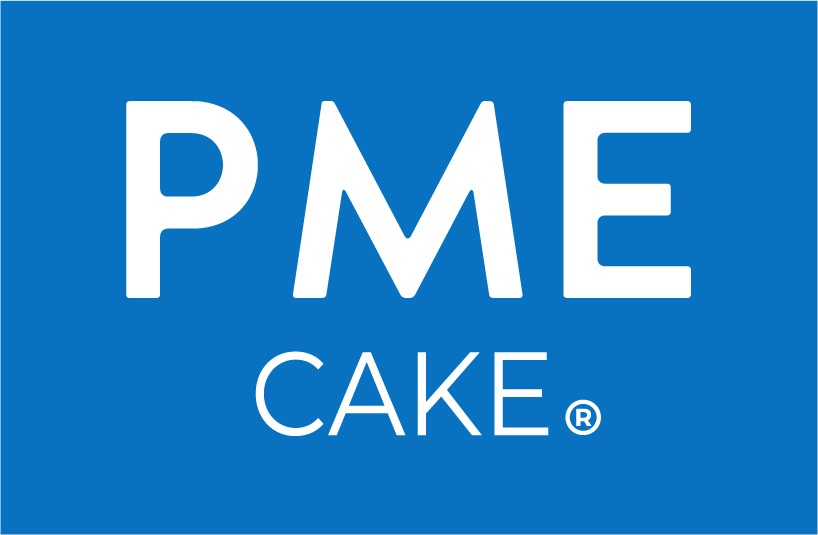
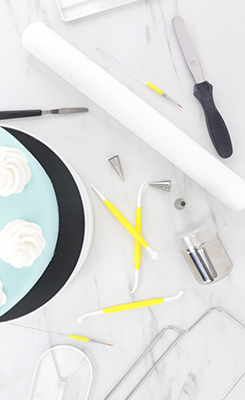
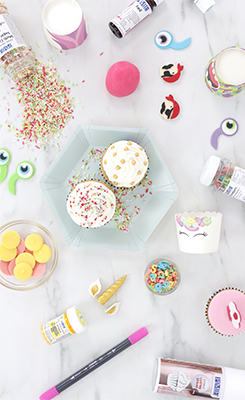
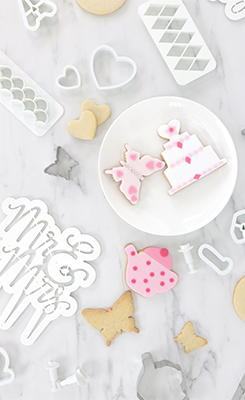
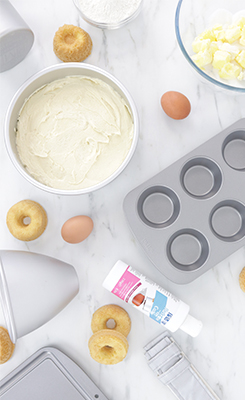
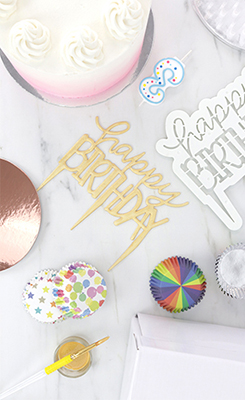
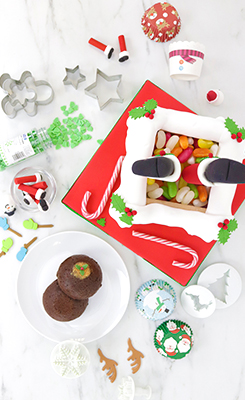
_2022044-140204.jpg)
 Free delivery over £30
Free delivery over £30
 Cake. Bake. Party!
Cake. Bake. Party!
 Teach PME Classes
Teach PME Classes